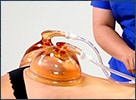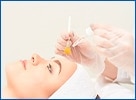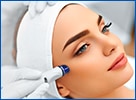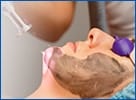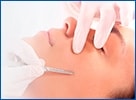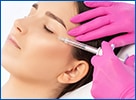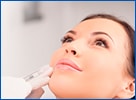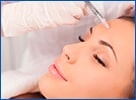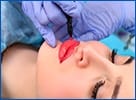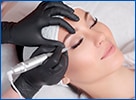What Is a Carbon Laser Peel?
Skin resurfacing procedures with low invasiveness are widely used to enhance skin look. Nearly two million Americans received a chemical peel or a laser procedure in 2020. These outpatient procedures frequently have positive results, are inexpensive, and can be finished in a brief consultation. Depending on your skincare objectives, there are numerous laser treatments and peels.
Resurfacing procedures can be divided into three categories: superficial, medium, and deep. The number of skin layers that the treatment penetrates accounts for their differences. With little recuperation time, simple treatments produce limited outcomes. Treatments penetrating deeper beyond the skin’s surface have more profound impacts, but recovery is more complicated.
A carbon laser peel is a well-liked solution for minor to moderate skin problems. Acne, enlarged pores, greasy skin, and uneven skin tone can all be treated superficially with a carbon laser peel. They are occasionally known as carbon laser facials.
The peel is not a conventional chemical peel, despite the name. Instead, your doctor produces a peeling effect with lasers and a carbon solution. There is little recovery time because the lasers don’t pierce the skin very deeply. After the 30-minute procedure, you can immediately resume your normal activities.
How Do Carbon Laser Peels Work?
Carbon laser peels are often performed in a medical spa or at your doctor’s clinic. Always check to see if the person providing the procedure has the necessary training. A qualified professional executing the carbon laser peel is critical for safety because every skin treatment risks infection or harm.
The following are the primary stages for a carbon laser peel.
- Carbon lotion: Your skin will first be treated with a lotion that is dark in color and contains a lot of carbon. The lotion helps to prepare the skin for the following steps by exfoliating the skin. You will need to sit with it on your face for a while to allow it to dry. As the lotion dries, it forms a bind with the oil, grime, and other impurities on your skin’s surface.
- Warming laser: Your doctor might begin by warming up your skin with one type of laser, depending on your skin type. The laser will heat the lotion’s carbon as it is passed over your face, causing it to absorb pollutants from your skin.
- Pulsed laser: Your doctor uses a pulsed laser to break down the carbon as the last stage. The laser and carbon particles destroy any oil, dead skin cells, bacteria, or other pollutants on your face. The heat produced by the process triggers your skin’s healing response. To give your skin a tighter appearance, that increases collagen and elastin production. You won’t need any numbing cream before the treatment because the carbon laser peel is a gentle technique. The procedure should be finished quickly so you can leave the medical facility or doctor’s office.
What Does a Carbon Laser Peel Treat?
Acne can be effectively treated with the carbon laser peel. The entire procedure aims to eliminate the bacteria, oil, and debris that can clog pores and lead to acne. According to doctors, it can get rid of acne that is already there and stop future breakouts for weeks or months.
To effectively treat acne, you might require several treatments. Because the procedure is non-irritating, it doesn’t increase the discomfort of inflamed skin. Without experiencing any side effects, you can perform more carbon laser peels as needed.
Carbon laser peels may enhance the following in addition to curing acne:
- Early aging signs
- Oily skin
- Dull skin tone, texture, and complexion
- Wrinkles & Fine lines
- Mild acne scars
- Dark spots
Preparation and Recovery
Peels using a carbon laser are gentle and completely non-invasive. Generally speaking, no special preparation is required, but check with your doctor. Your doctor could advise stopping any prescription skin treatments you use if they irritate your skin.
Despite some reports that the therapy causes a slight stinging sensation, the operation itself is harmless. Most individuals have no aftereffects at all. The most typical adverse reaction is slight redness, which usually goes away within a day. Following treatment, your doctor will likely advise using gentle products and wearing sunscreen.
After just one treatment, which exfoliates the skin and clears the pores to give it an immediate appearance of brightness and clarity, you will see some improvement. As your skin develops more collagen and elastin over time, your results may improve. For best success, doctors frequently advise several carbon laser peels, typically four to six visits spaced several weeks apart. Your physician can advise you on the number of treatments you will require.
